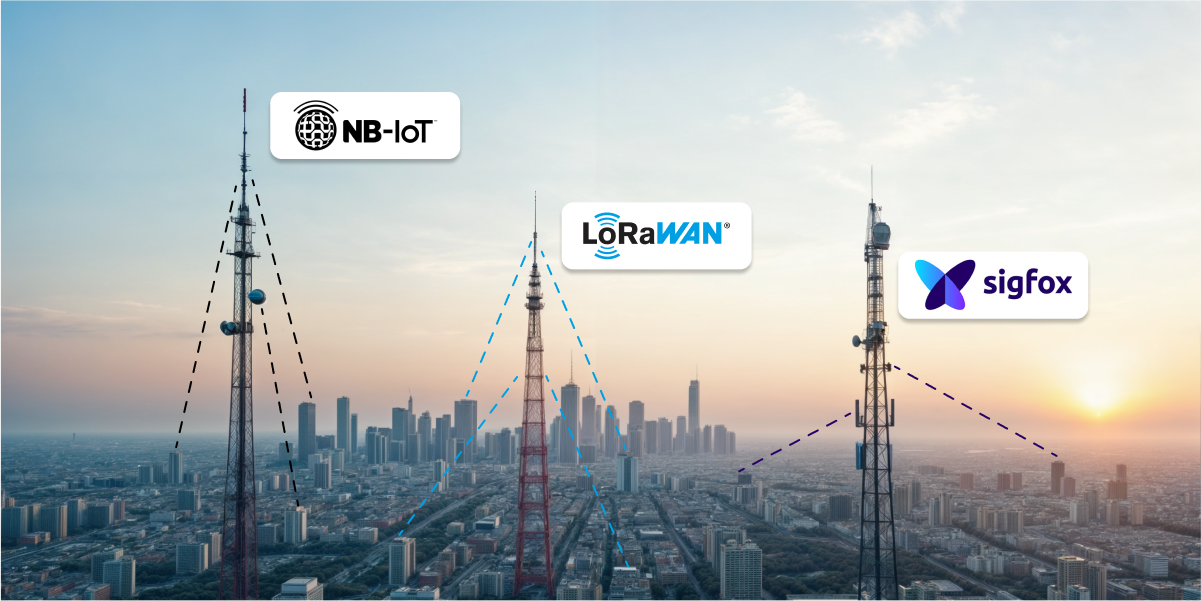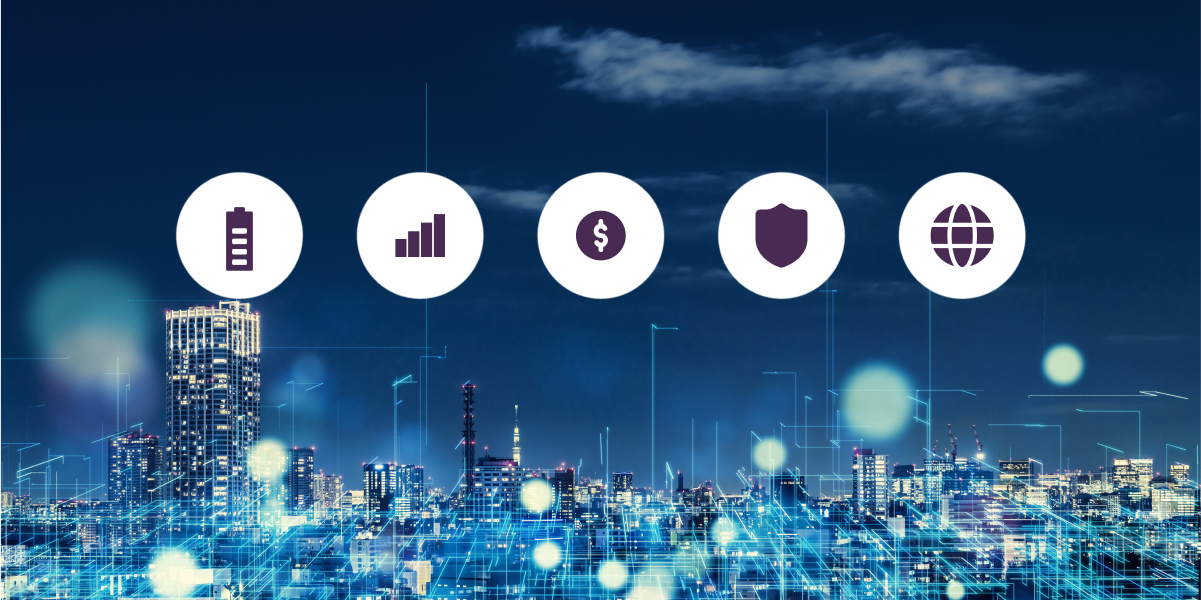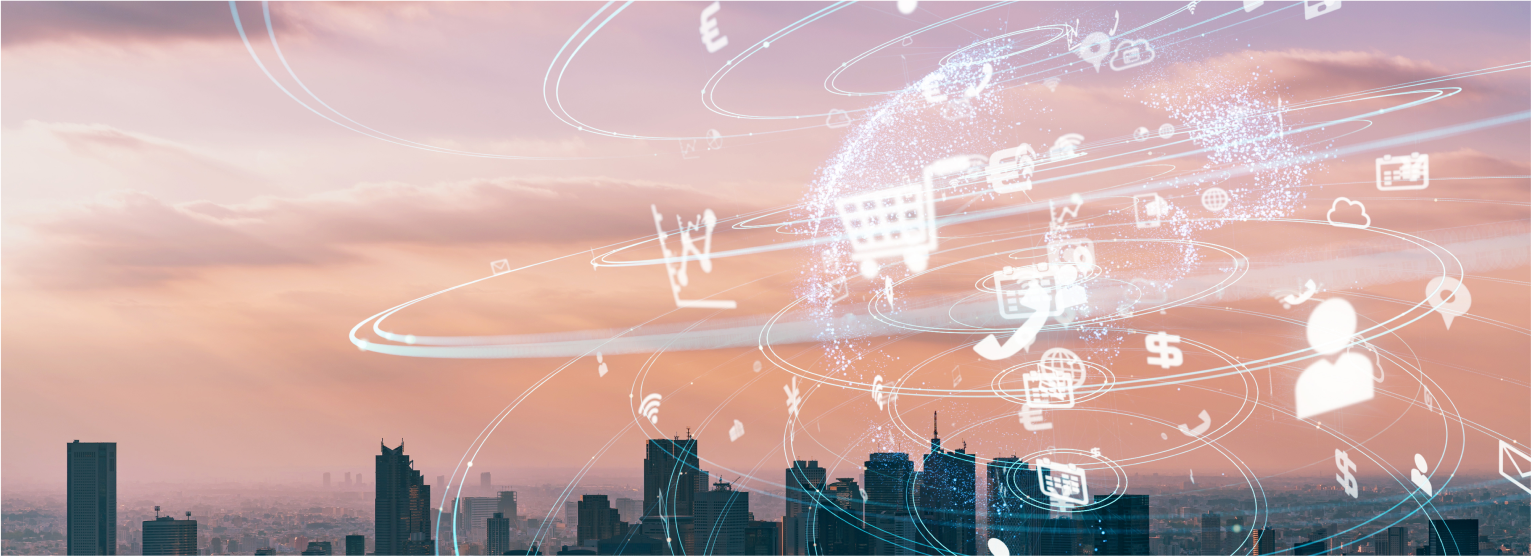In today’s Internet of Things (IoT) landscape, more and more devices are connecting to networks to collect, transmit, and analyze data. Traditional wireless communication solutions often fall short in terms of efficiency for such applications. This challenge is addressed by LPWAN (Low-Power Wide-Area Network) technologies—networks designed for long-range communication with minimal power consumption. Among the various LPWAN protocols, LoRaWAN stands out due to its unique features.
In this article, we will look at how LPWAN works and LoRaWAN benefits for industry, making it a leading technology in this field.
How LPWAN Works
LPWAN is a family of technologies designed to transmit small amounts of data over long distances with minimal energy consumption. These networks are ideal for IoT devices that operate autonomously on battery power for years.
Key characteristics of LPWAN:
- Low data transmission rates: Typically ranging from a few hundred bits to several kilobits per second.
- Long range: A single base station can cover distances of tens of kilometers in open areas.
- Energy efficiency: Devices in LPWAN networks use sleep modes and activate only when transmitting data.
- Support for a large number of devices: A single base station can handle tens of thousands of connections.
LPWAN is widely used in smart cities, agriculture, industrial automation, logistics, and other fields where data needs to be collected from remote sensors and devices.
LPWAN Technologies

There are multiple LPWAN technologies, each with its own features. Some of the most well-known include:
- Sigfox: A protocol with a fixed data transmission rate, operating in both licensed and unlicensed frequency bands.
- NB-IoT (Narrowband IoT): A cellular-based technology that uses licensed frequencies.
- LoRaWAN: A protocol based on LoRa technology, which operates in unlicensed frequency bands.
Each of these technologies is designed to enable data transmission in resource-constrained environments, but LoRaWAN stands out due to its unique combination of characteristics.
What Is LoRaWAN and How Does It Work?
LoRaWAN (Long Range Wide Area Network) is a network protocol designed for managing LoRa-based communication networks. LoRa (Long Range) is a modulation technique developed by Semtech that allows data to be transmitted over long distances with minimal power consumption.
Key components of a LoRaWAN network:
- Devices: Sensors and other IoT devices that collect and transmit data to base stations.
- Base stations: Receive data from devices and forward it to a network server.
- Network servers: Process data, manage connections, and route information.
- Applications: End-user systems that use the collected data for analytics, monitoring, or control.
How LoRaWAN networks operate:
- A device transmits data using LoRa technology to the nearest base station.
- The base station forwards the data to a network server via the internet or another network.
- The network server processes the data and delivers it to the target application.
Advantages of LoRaWAN Over Other LPWAN Technologies

Let’s take a closer look at why LoRaWAN is unique in LPWAN technologies and its resulting advantages:
- Unlicensed frequency bands: LoRaWAN operates in free frequency bands (e.g., 868 MHz in Europe and 915 MHz in the U.S.), reducing network deployment costs.
- Long range: Increased network coverage – LoRaWAN can transmit data up to 15 km in rural areas and up to 5 km in urban environments.
- High device capacity: Use of LoRaWAN for low-power IoT devices – a single base station can support thousands of IoT devices simultaneously.
- Flexible configuration: The LoRaWAN network can be adapted to specific needs by adjusting modulation and data transmission rates.
- Low deployment costs: Due to the use of unlicensed frequencies and easy installation, LoRaWAN is often more cost-effective than other LPWAN technologies.
- Security: LoRaWAN supports two-layer data encryption using AES-128.
- Long battery life: Thanks to low power consumption, devices can operate on battery power for up to 10 years.
Use Cases for LoRaWAN
The benefits of LoRaWAN in LPWAN networks has led to its increased popularity in industry, including:
- Smart cities: Managing street lighting, monitoring air quality, and tracking waste container fill levels.
- Agriculture: Soil moisture monitoring, temperature control, and plant health tracking.
- Logistics: Tracking cargo locations and monitoring temperature conditions in refrigerated transport.
- Resource management: Monitoring water, gas, and electricity consumption with smart meters.
Why LoRaWAN Is the Future of LPWAN
LoRaWAN combines all the advantages of LPWAN technologies while offering flexibility, cost efficiency, and reliability. With an open ecosystem and support from major companies such as Semtech and The LoRa Alliance, LoRaWAN continues to evolve and find new applications in long-range communication.
As the demand for IoT solutions grows, LoRaWAN remains one of the most promising standards. Its scalability, affordability, and ease of deployment make it the top choice for businesses looking to leverage IoT to optimize processes and improve efficiency.
LPWAN networks play a crucial role in the development of the Internet of Things, providing reliable and cost-effective low-power data transmission. Among the many available technologies, When comparing LoRaWan vs other LPWAN protocols, it stands out due to its versatility, low cost, and broad range of applications. This technology not only addresses current IoT challenges but also paves the way for new innovations.



